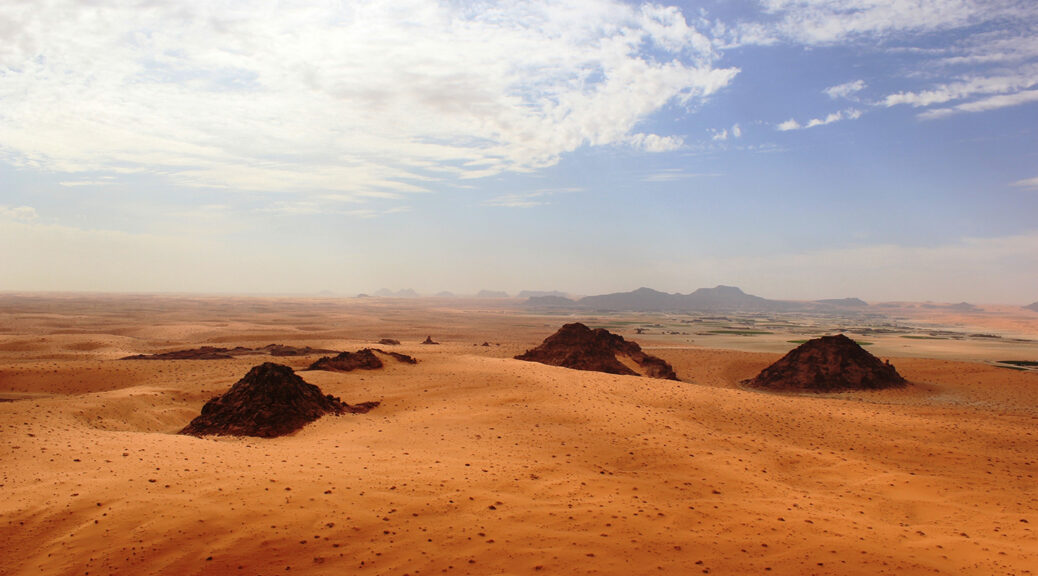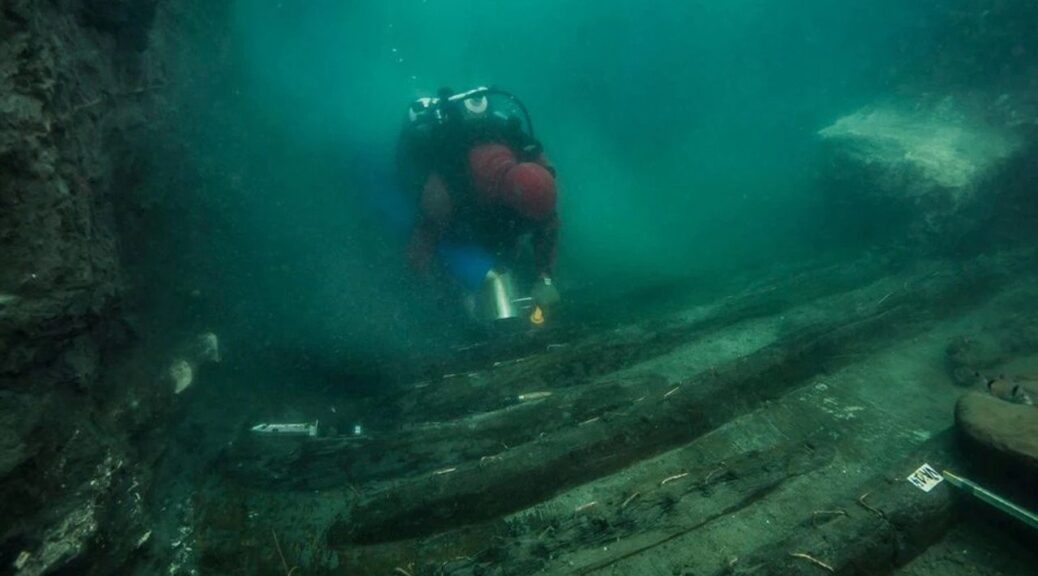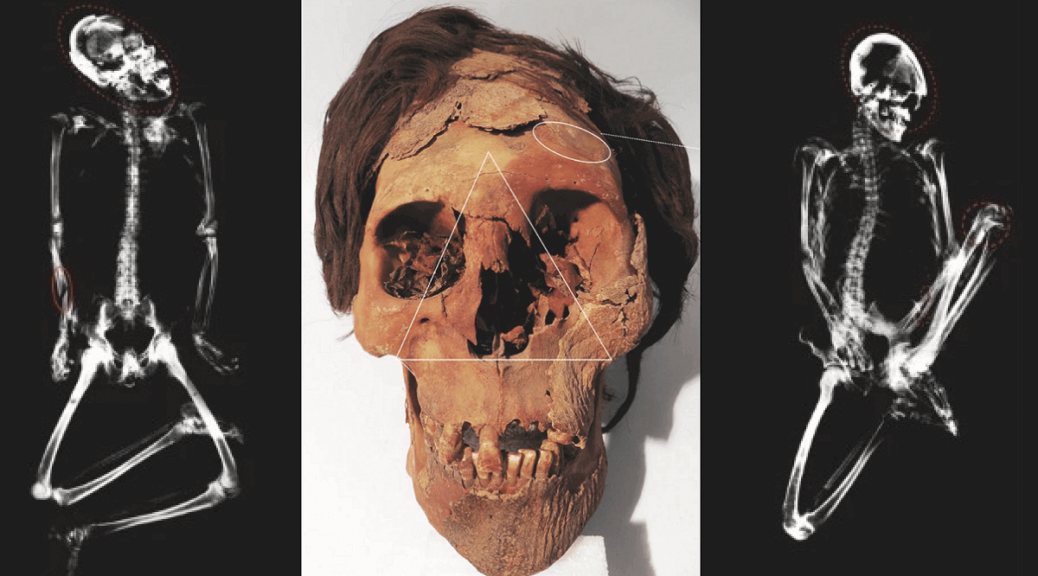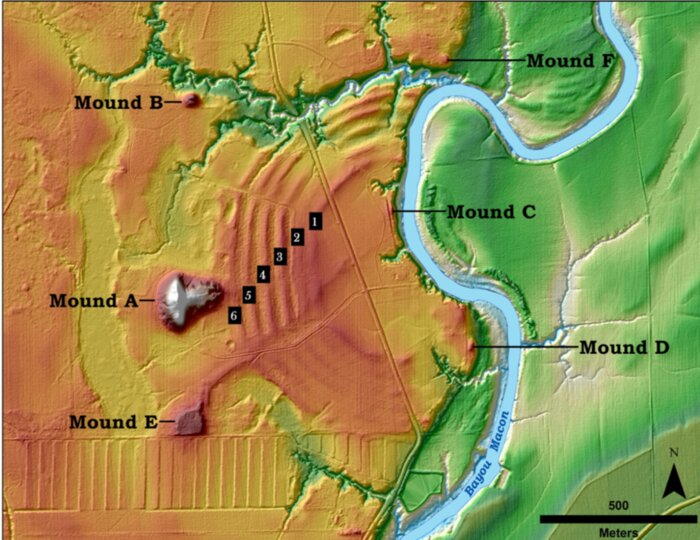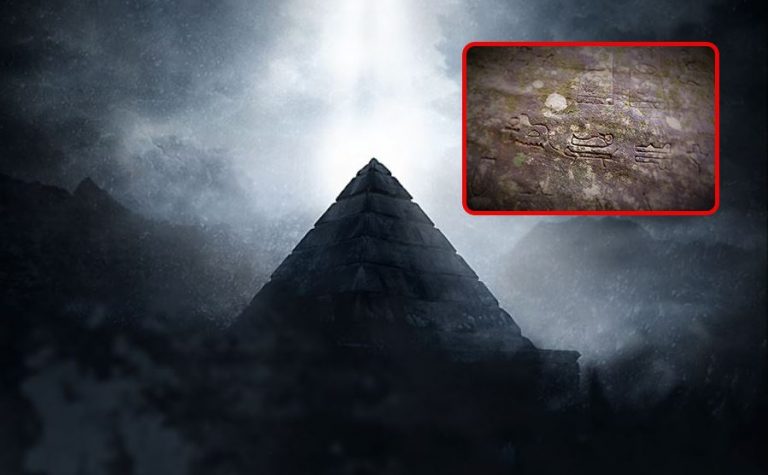Huge and exquisite gold hoard from Iron Age discovered in Denmark

A huge gold treasure of almost 1 kilogram consisting of medallions the size of small saucers and Roman coins made into jewellery, has now seen the light of day. Amateur archaeologist Ole Ginnerup Schytz had just acquired a metal detector and was allowed to walk in the field with his old classmate. After a few hours, the detector buzzed, and then Danish history was a marked gold find richer.
“It really is a unique find. It’s something you don’t see very often, maybe every 50 years, “exclaims Mads Ravn, head of research at the Vejlemuseerne. Two days before Christmas Eve, Mads Ravn received an SMS from Ole Ginnerup Schytz, who sent a picture of the unique gold find, and asked if it was anything special?
“I replied immediately that: ‘I probably think it is,’ remembers Mads Ravn. The find was made on a field 8 kilometres from Jelling. So far, the exact location of the find is kept secret so that it is not run over by amateur archaeologists looking for gold.
“There is no more gold,” emphasizes Mads Ravn.

Large medallions are completely unique
The treasure has since been examined and is dated to have been buried in the 500s. Especially the medallions as large as small saucers stand out in the eyes. These are some of the largest found in Denmark.
“The size is spectacular because they are usually the size of a 5 kroner,” says Mads Kähler Holst, who is an adjunct professor of archaeology at Aarhus University and who has not been involved in the gold discovery.
“But the pictorial world and the inscription on them are also really interesting,” he adds.
The medallions are decorated and are known as a special type of medallions called bracteate. It was a kind of medallion that was given away to alliance partners, explains Lisbeth Imer, museum inspector and senior researcher at the National Museum:
“It was a kind of piece of jewellery that you wore around your neck, and in that way, you could show who you were in alliance with,” explains Lisbeth Imer, who researches runes.

Early signs of Norse mythology
The medallions are just decorated with runic inscriptions and motifs that possibly refer to the rulers and nobles of the time, which is very common. One of the finds stands out, however, as it brings to mind Nordic mythology. On the medallion is printed a man’s head with a braid and some runes. Under the head is seen a horse and in front of a bird with which the man communicates. There is a runic inscription between the horse’s muzzle and forelegs, which according to the preliminary interpretations says ‘houaʀ’; ‘the tall’.
‘The High’ may refer to the ruler who abolished the find but is also in later mythological contexts associated with the god Odin. The high is one of the names by which Odin is later known. But typically we only see it many hundreds of years later. We know it, among other things, from the Icelandic Edda poems, which perhaps in oral form date back to the 9th century, “says Lisbeth Imer.
“It may be a sign that Nordic mythology and the way of thinking in the later Viking Age was more widespread than we already thought around the year 500, which is 300 years before the Viking Age,” adds Mads Ravn from Vejlemuseerne.

Insanely heavy Roman coins
In addition to the medallions, the treasure also consists of a handful of Roman coins that have been turned into jewellery. The coins are insanely valuable (expression of how large a part of a metal mixture is made up of a precious metal, ed.). They are wildly heavy and have almost 24 carats. These are some that you have picked up in Rome or served in the Roman army, “says Mads Ravn.
It is not uncommon for Roman gold at that time to end up in dark northern Europe. It is popularly said that the downfall of the Roman Empire began around the year 395. Since then, the city was plundered by Germans.
“We are back at the time of the migration. The Roman Empire has fallen and they are pumping huge amounts of gold into the rest of Europe. Much of that gold ends up in Scandinavia, “says Mads Kähler Holst and continues:
‘The great change of power in Europe between Romans and Germans took place at that time. As a result of these upheavals, a new elite emerges in the 5th century. That is the story that the find is based on, “he explains. The gold treasure is so valuable that it has no doubt been dug down by a powerful great man or warlord at that time. But scientists do not yet know who the powerful Iron Age persona was.

The find may be connected to the Jelling Kings
This week, however, they got a little wiser. Although the treasure was found last winter, archaeologists from the Vejlemuseerne have only had the opportunity to excavate the site this summer. In this connection, they have now found out that the treasure has been buried in a longhouse, located in a village consisting of 3-4 farms, as it looks so far.
That the treasure was found in a house is interesting for several reasons. This indicates that the rich and powerful lord has been established in the area and is not only driven past the area, which is only 8 kilometres from Jelling.
Jelling is known as a centre of power in the Viking Age, which broke through in the 10th century when first Gorm the Old ruled over Jutland, and Harald Bluetooth later raised the Jelling stones and ‘made the Danes Christian’.
However, we know very little about what the area looked like before that time. Large royal seats such as Lejre and Uppsala have roots from around the 5th century. But we do not know Jelling’s history from before the 10th century very well, «says Mads Kähler Holst.

Thus, there is a significant part of the story of how Denmark came to be, which we do not quite understand yet. Here, the new gold treasure may play a role. It raises a discussion about whether the gold find here has a connection to the Jelling kings from the 10th century, points out Mads Kähler Holst. He emphasizes, however, that there is still a large black hole of 400 years from the year 500 to the 900s, but it is likely that there has already been a local power foundation for centuries before Jelling really became a central part of the map of Denmark.
We have enough knowledge to conclude that there has lived an important little king or warlord who has been involved in the struggle for a united Denmark, long before we thought. The discovery of the enormous amount of gold shows that the site has been a centre of power in the late Iron Age, “emphasizes Mads Ravn. Several other small villages have also been found in the area around Jelling from that time, says the head of research.
The gold treasure will be exhibited next year
Mads Ravn and his colleagues from the Vejlemuseerne obviously want to dig further in the secret place near Jelling, so they can find out more about who was behind the burial of such a precious treasure. The initial analyzes from the area show that the tax was buried, in roughly the same period as the houses were used. However, archaeologists have planned to make carbon-14 datings at the site so they can get even more accurate knowledge of when the houses are from.
However, the excavation work is over, as there is a lack of time and funds to continue digging in the area, Mads Ravn announces. If you have become curious about the new gold find, you can be happy that the Vejlemuseerne is exhibiting the treasure in a large Viking exhibition that opens on 3 February 2022.
The exhibition tells the story of Harald Blåtand’s eastern connections and of the early state formation that created the foundation for the Jelling dynasty. The Viking exhibition is made in collaboration with the Moesgaard Museum, which also has an exhibition that tells about other aspects of the Vikings’ travels to the east.





